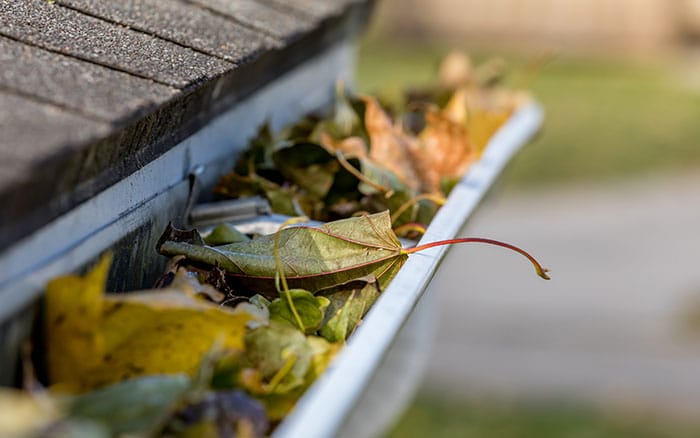Use the falling autumn leaves to you benefit your garden by creating leaf mould, which can be used as seed compost, mulch or soil conditioner.
In autumn, the deciduous trees turns all shades of orange, red and yellow. They look glorious, but it’s only a matter of time before those high winds hit and with it our gardens become inundated with a sea of leaves.
Are you one of those people who leave them and do nothing, or are you rushing out with rake to clear all of them away? Consider making leaf mould with them because leaves are the gardener’s gift. Leaf mould is easy to make, takes very little time and is free!
What is leaf mould?
Leaf mould is the name given to a bunch of mainly deciduous leaves that have broken down and decayed to such an extent that they form a type of compost. This mould is brilliant for conditioning the soil or covering the soil in the form of a mulch. It can even be used as a seed-growing compost.
When leaves fall, they often end up covering your flower borders, your lawn and driveway too which can be a nuisance and a slip hazard.
Thick layers of leaves left on the lawn can damage grass and even kill it off completely if the leaves block light getting to it. So, it’s always a good idea to rake leaves off the lawn.

Collecting up leaves
It’s best to use a springbok rake. This is different to a soil rake as it’s usually lighter and the tines longer and spread apart wider.
Plastic leaf rakes are good as they can also rake up thatch, which is the build up of dead material. They can also be used to ‘fluff up’ ground cover plants in the spring and to gently rake out small fallen twigs amongst shrubs.

Storing leaves
Once raked up from the ground, instead of putting them in the recycling bin, create a separate store for them. There’s two easy ways to do this.
The first is to just put them into bin bags, hessian bags or used compost bags. Then, add some water, tie the bags up, punch holes in them. They can then be left outside for 18 months to 2 years, occasionally turning them upside down.
After time they should have broken down into the most amazing soil conditioner for your flower borders.
You can hide the bags behind buildings or trees as long as they’re open to the elements. This is because it’s important that they’re kept moist during that time. If you’re using empty compost bags, then turning the bags inside out will make them less visible.
The other method if you have a bit more space available, or an allotment, is to create a simple square cage. Use chicken wire and bamboo canes or thin pieces of wood to stabilise the four corners of the cage. After, just throw your leaves into it and let nature and rain do the rest!
Ensure that you site the cage in a sheltered spot so that the leaves don’t blow away.

Which leaves make the best leaf mould?
Beech, oak, and hornbeam break down the quickest and mixing different types of leaves together speeds up the decomposition process. Sweet and horse chestnut and sycamore leaves take longer to break down.
So, if you have time and space, mowing over or shredding these types of leaves first into smaller pieces will speed up the process.
Evergreen leaves like laurel and holly need extra heat to break down. Therefore they’re better shredded and added to a productive compost pile rather than left to their own devices.
It’s the same for conifers with the exception of pine needles which should be stored in a separate outdoor leaf mould making pile, because they eventually break down to form an ericaceous type of compost. This compost is great for plants that prefer growing in acidic soil such as rhododendrons and blueberries.

How to use leaf mould
Seed sowing compost
Well-rotted deciduous leaves turn into a fine, crumbly compost which can be sieved and used as a compost for sowing seeds. It usually takes eighteen months to two years to reach this stage but is well worth the wait.
As a mulch or soil improver
Leaf mould that is less than two years old can be used in several different ways; as a mulch for your flower borders, or applied thinly to lawns in the autumn as a top-dressing. It can also be dug into heavy or poor soil to condition the soil.


Leave A Comment